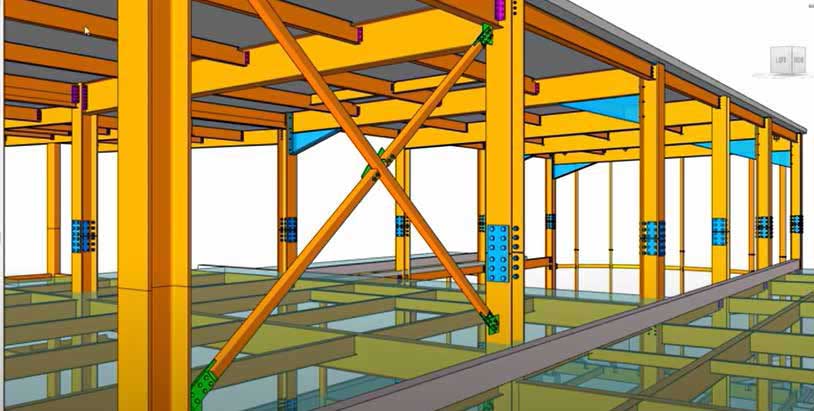Structural BIM (Building Information Modeling) modeling is a digital representation of the structural systems of a building, such as the foundation, columns, beams, and slabs. Also provides several advantages, including improved collaboration, better visualization, accurate quantity take-off, clash detection, improved analysis, and enhanced construction sequencing, resulting in improved project outcomes.
STRUCTURAL ANALYSIS
Conducting structural analysis to determine the forces and loads that the building or structure will experience. This includes dead loads (permanent loads like the weight of the building itself), live loads (temporary loads like occupants and furnishings), wind loads, snow loads, seismic loads, and other environmental factors.
STRUCTURAL DESIGN
Using the results of the structural analysis, structural engineers design the building's framework or structural elements, such as beams, columns, slabs, foundations, and walls. They ensure that the design can safely carry the loads and withstand potential forces without failure.
CODE COMPLIANCE
Ensuring that the structural design meets local building codes, regulations, and industry standards to guarantee structural integrity and safety.
MATERIAL SELECTION
Selecting appropriate building materials, such as concrete, steel, wood, or masonry, based on structural requirements, building codes, and project constraints. The chosen materials should meet strength, durability, and safety criteria.
SEISMIC AND WIND DESIGN
conditions of the project's location and designing structures to withstand these forces, preventing damage during earthquakes or strong winds.
FOUNDATION DESIGN
Designing the foundation to safely transfer the building loads to the soil while avoiding settlement and ensuring stability.
CONSTRUCTION DOCUMENTATION
Creating detailed structural construction drawings and specifications that communicate the design intent to builders and contractors.
STRUCTURAL EVALUATION AND RETROFIT
Assessing existing structures for potential issues, performing structural evaluations, and designing retrofit solutions to improve safety and meet current standards if necessary.



